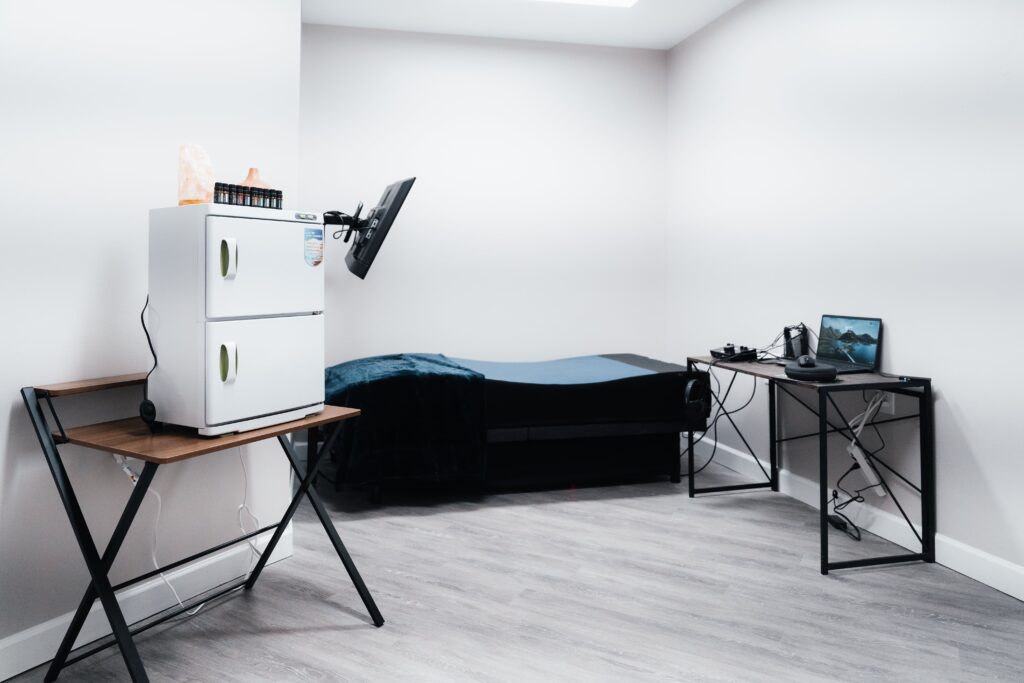As we approach the winter months, people who have seasonal affective disorder (SAD) may be experiencing the return of certain distressing symptoms. If you have this condition, there are a few steps you can take that may minimize the impact that SAD has on your life. Incorporating seasonal affective disorder self-care practices into your daily routine can make a world of difference.
What Is Seasonal Affective Disorder?
Before we explore seasonal affective disorder self-care options, we should take a moment to discuss the disorder itself.
Seasonal affective disorder is a mental health concern that is characterized by depression-like symptoms that only occur at certain times of the year. Typically, people who have SAD experience symptoms during autumn and winter months, when there is less daylight and the weather is colder.
Millions of people struggle with the symptoms of SAD every year. According to the Cleveland Clinic, about 5% of adults in the U.S. have seasonal affective disorder.
The Diagnostic and Statistical Manual of Mental Disorders (DSM-5), which is the standard reference book for clinicians in the United States, uses the term major depressive disorder with seasonal pattern to describe what most people refer to as SAD.
It is important to understand that, acronym aside, the symptoms of SAD are much more serious than temporary melancholy or a case of the “wintertime blues.” Symptoms of this condition may include:
- Depressed mood
- Low energy levels
- Persistent fatigue or exhaustion
- Pervasive sadness or despair
- Disrupted sleep patterns
- Significant changes in appetite
- Difficulty concentrating or focusing
- Lack of motivation
- Overwhelming sense of hopelessness
- Recurring thoughts of death or dying
- Thoughts of self-harm or suicide
These symptoms can be severe enough to disrupt a person’s ability to function at work, in school, or in the context of their personal relationships.
Self-Care for Seasonal Affective Disorder
If you have been experiencing the symptoms of seasonal affective disorder, you may need professional treatment. Depression can’t be resolved by positive thoughts or willpower alone. It is a potentially debilitating mental health condition.
However, there are some steps you can take that may lessen the severity of your symptoms and improve your quality of life. The seasonal affective disorder self-care tips listed below may help you get through the darker, colder months with minimal distress.
Watch What You Eat
The quality of your diet can have an impact on your physical strength and your mental well-being. If you struggle with SAD, you may experience cravings for candy, carbohydrates, and other “comfort foods.”
There’s nothing wrong with enjoying a snack from time to time, but you also need to be sure you are following a balanced, nutritious diet plan.
Stay Active
When the sun sets before the workday ends, and as the temperatures dip precipitously, it can be difficult to get an ample amount of exercise. But it is important to keep your body moving. As is also the case with diet, exercise offers both physical and psychological benefits.
You don’t need to train like an Olympic athlete, but you need to find ways to incorporate exercise into your days. Join a gym or work out at home. Go skiing or ice skating. Take a walk during your afternoon lunch break. When you find an activity that you enjoy, you will be much more likely to make it a habit.
Keep in Touch
When you’re feeling down, you may have a tendency to isolate yourself. This isolation can, in turn, exacerbate your depression. Keeping in touch with friends and/or family members can truly make a world of difference. Emails are nice, phone calls are better, and getting together in person is ideal.
You don’t need to make a big production out of this. Meet up for a cup of coffee and some light conversation. Go for a walk or, if you’re so inclined, a run. As with exercise, once you make a habit of scheduling occasional get-togethers, it will be easier to maintain the practice (and the benefits).
Practice Mindfulness
Mindfulness is the practice of being fully present in the moment and aware of your surroundings without judging, reacting to, or attempting to hide from what you are experiencing. This practice encourages you to acknowledge your thoughts and emotions without shame, guilt, or self-criticism.
Mindfulness has been associated with a wide range of mental health benefits, including improved mood and reduced stress. It won’t eliminate difficult emotions, but it can help you respond to these feelings in a healthier manner.
Light Up Your Life
It’s no coincidence that SAD occurs during the parts of the year when there is the least amount of natural light. If you have the chance to spend some time outside when the sun is out, that can be beneficial. If you can’t get outside, there are other ways to get more light in your life.
Some people use specially designed light boxes, which emit low-UV light. (UV, or ultraviolet, light is emitted by the sun and tanning beds. Overexposure to this type of light has been associated with health risks.) If you seek professional treatment for seasonal affective disorder, your care may include red light therapy. This type of treatment can be helpful for people who are experiencing symptoms of depression.
Get Help for Seasonal Affective Disorder in Nashville, TN
Seasonal affective disorder self-care can make a true difference in your life. But depending on the nature and severity of the symptoms you have been experiencing, self-care alone may not be enough. Arbor Wellness offers customized treatment services for adults whose lives have been impacted by SAD and other mental health concerns. Our center in Nashville, Tennessee, is a safe and welcoming place where you can receive personalized care and comprehensive support from a team of skilled professionals. To learn more about how we can help, give us a call or visit our admissions page.

























